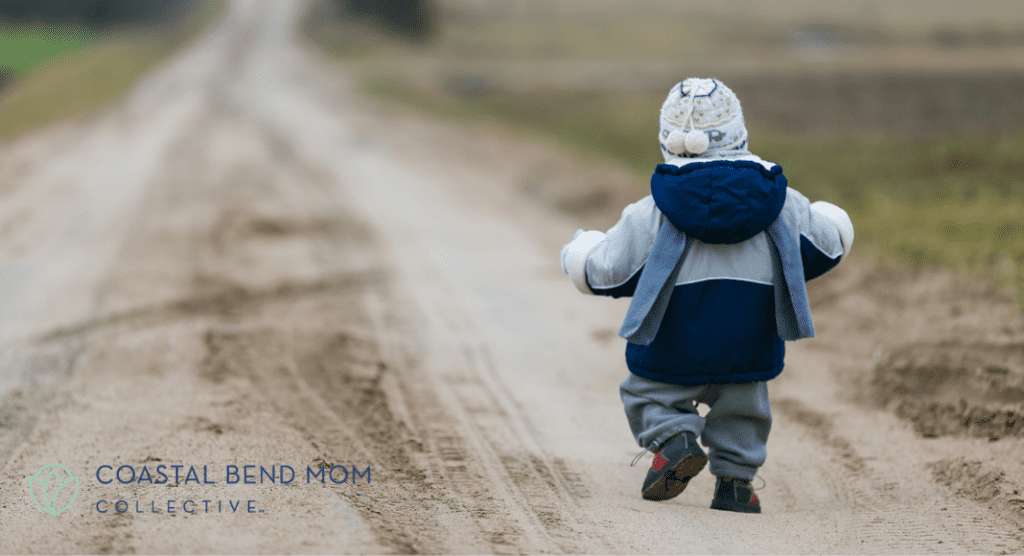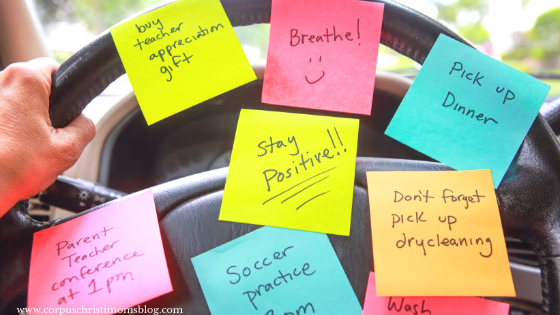
Ever since my daughter could walk, my husband and I started going on “toddler walks,” a name we eventually dubbed for slower-paced, toddler-led walks. Unlike our faster walks using a stroller or carrier, our toddler walks allow us to slow down and connect with each other, nature, and our child-like sense of wonder. They’re also one of our favorite ways to get more hours outside.
When we allow our daughter to lead and stop as much as she wants, we notice more details from a child’s perspective. We notice the little roly-poly making his way across the sidewalk. We squat down to watch him, and we notice how he rolls up into a ball when my daughter taps him with her finger. He stays that way for a while. But then, oh look! There’s a large eagle soaring through the air! My daughter spreads her arms to mimic the bird of prey. As she looks back up towards the sky, she notices the moon playing peek-a-boo in the daylight. “Moon!” she squeals, jumping up and down, pointing towards its direction.
By the end of the walk, we’ve collected various rocks, tree nuts, sticks, wild flowers and weeds. If we’re at the beach, we have a bucket of seashells in tow, as well as a wealth of seashore memories and observations. We take our natural treasures back home, and my daughter adds them to her nature table, where she can continue to explore them. Sometimes we add them to sensory bins or use them to make nature crafts.
If a toddler walk sounds like a habit you’d like to start with your little one, here are some tips and tricks we’ve learned over the past year and a half. You’ll soon find that toddlers are able to walk much longer and further than we often give them credit for—it’s just at a much slower and distracted pace than we’re used to.
When to Take a Toddler Walk
Weekly Frequency
We try to walk outside with our toddler every day, but you can start with once a week. Maybe you can establish a routine of taking a toddler walk every Friday or Saturday?
Time of Year
Keeping up with this habit throughout the entire year is fascinating. If you take the same route at least once a week for a whole year, you and your toddler will notice the seasonal changes. Which flowers have bloomed and which plants are dying? Have any birds migrated? What insects are out? What colors or smells define this time of year? What animal footprints do you often see this time of year? Do you notice any baby animals? Any new animal sounds (cicadas, birds, etc.)?
We love to note when our favorite flowering trees bloom, and we stop in awe to watch the fairy-like dragonflies hunt together in a magical mass. We also found a spot where a bunch of baby frogs hop their way across the sidewalk at a certain time each year.
Type of Weather
I love the anonymous quote, “There’s no such thing as bad weather—just bad clothing.” This mindset gives us the freedom to say yes to go outside more often. Is it cold out? Bundle up with the proper cold-weather gear! Is it raining? Put on a raincoat (or rain suit) and rain boots and take an umbrella! As long as there is no lightning, it can be fun to splash in puddles and catch raindrops on your tongue. You might even see a rainbow.
The only time that’s hard for me to apply this line of logic is during the Corpus Christi summer, when it’s much too hot and the monster mosquitos are thick and attack in numbers.
Where to Walk
You can go on a toddler walk anywhere that’s convenient and fun for you. It can be as simple as walking around your neighborhood, local trail, or the beach. Or you can take it up a notch and drive to a scenic hiking trail, state park, or national park.
When my daughter first started walking, we only walked half a block on our suburban street. We eventually built our way up to a block and then to several. Now, she’s able to go on hour-long nature hikes. For walks or hikes that are longer, we bring the carrier with us just in case she gets too tired.
How to Walk With Toddlers—More Tips and Tricks
- Start as soon as possible. We started as soon as our daughter could walk, so she has been taking walks as long as she can remember. Now she’s a pretty quick runner to boot!
- Start small and work your way up to longer distances. No matter what age your child is, you can always start with short walks in order to get yourselves into the habit.
- Bring lots of snacks. If you’ve ever been around a toddler, you know that snacks (and lots of them) are a must to keep a tantrum at bay! Our favorite walk-friendly snacks include trail mix, sugar-free cereals, raisins, pretzels, apples, and carrots.
- Observe, observe, observe. Even though our toddlers are natural observers and scientists, we can help them practice using all of their senses by pointing out animals, plants, sounds, smells, textures, temperatures, weather and more.
- Collect nature objects. Whether it’s a pocket full of rocks or a cute foraging basket full of sticks and leaves, toddlers love bringing home items they find on their walk. It’s legit treasure to them.
- Play games. If they start to get tired in the middle of the toddler walk, help keep them happy by observing, collecting or playing games. Some fun games you could play are “I Spy” and “Follow the Leader.”
- Sing songs. If you have a little one that likes to sing, don’t shy away from letting their inner diva shine. It can keep them entertained for a while.
- Give them choices. If your toddler gets cranky and doesn’t want to walk the rest of the way back, you can offer choices like, “Do you want to run or hop like a bunny?” “Do you want to walk, or do you want me to carry you?”
- Say what they CAN do rather than what they CAN’T do—save NO for emergencies. Constantly hearing “no” or “don’t” doesn’t make walking much fun for a toddler. Rather than saying, “Don’t walk in their driveway,” you can say, “Stay on the sidewalk.” Part of a toddler walk is teaching our kids our limits. This also gives “No” more meaning and power when there’s an emergency, like if you’re kid starts to cross the street when a car is coming.
- Have a stroller or carrier as back up. If you’re going on a walk that’s longer than your little one can handle, it’s smart to bring something along just in case…unless you don’t mind carrying her back all the way!
- Use a backpack with a leash in crowded areas. We haven’t tried this tip yet, but if we’re going somewhere with a crowd, such as an airport or tourist attraction, I plan on getting a backpack with a leash. We would start with a stroller, but I know our girl would want to walk (or run) eventually, and I would want to keep her close by!















Wonderful articles
Comments are closed.